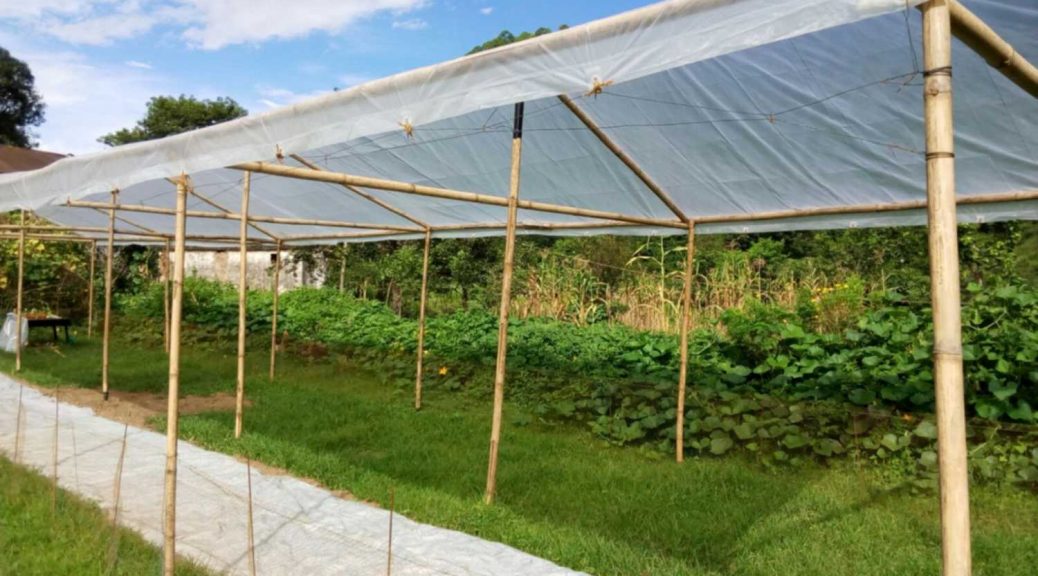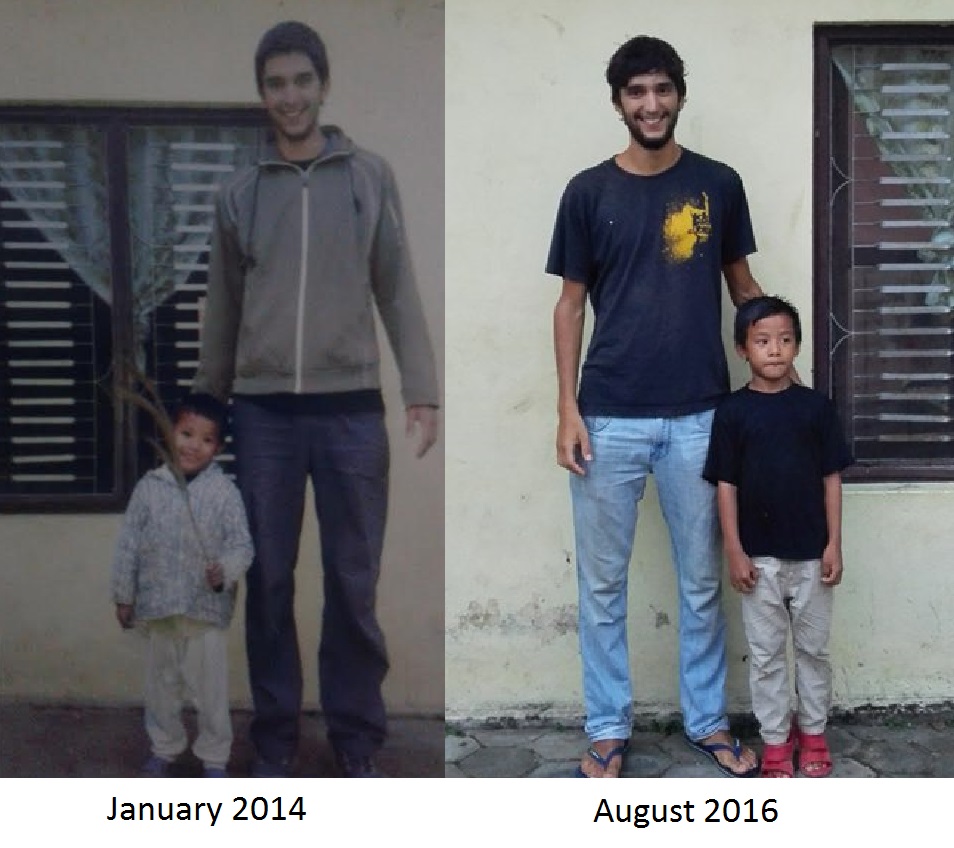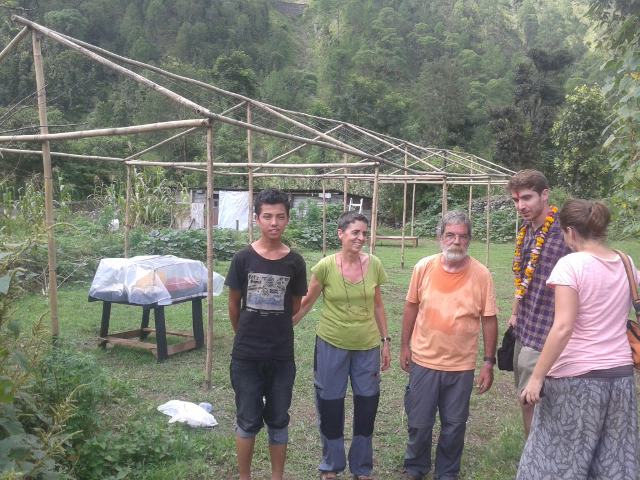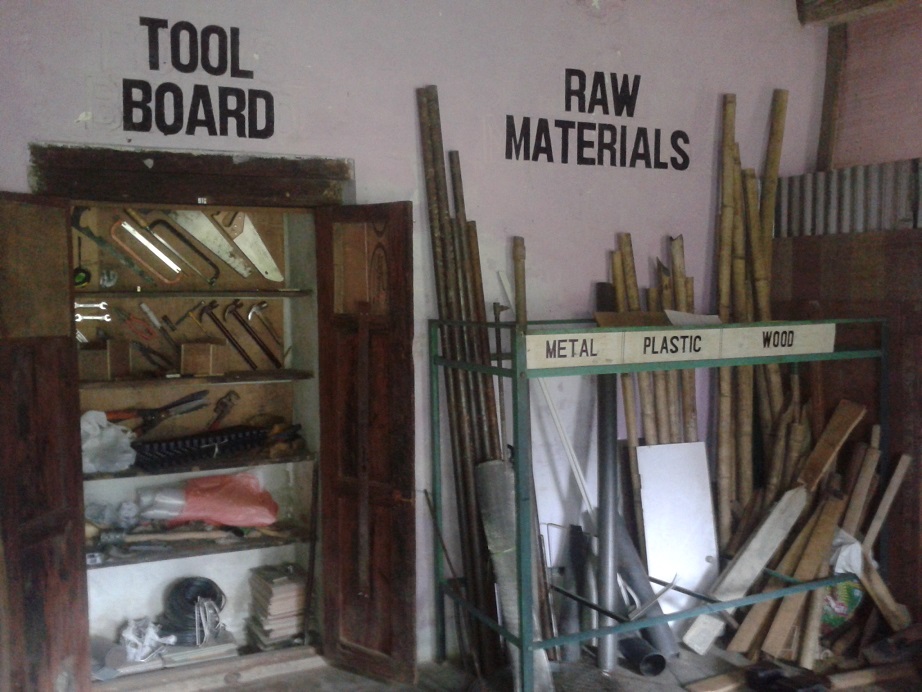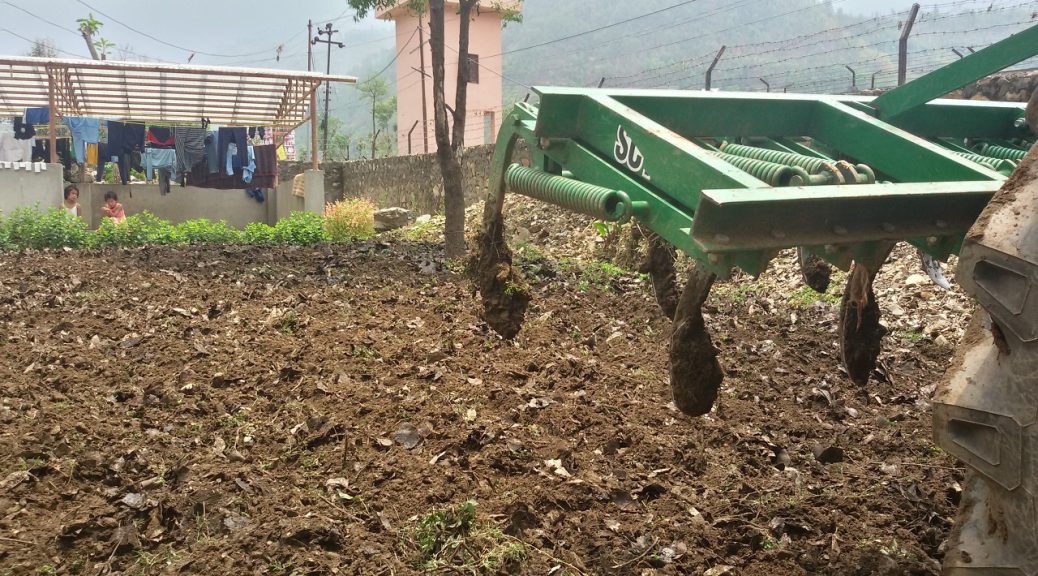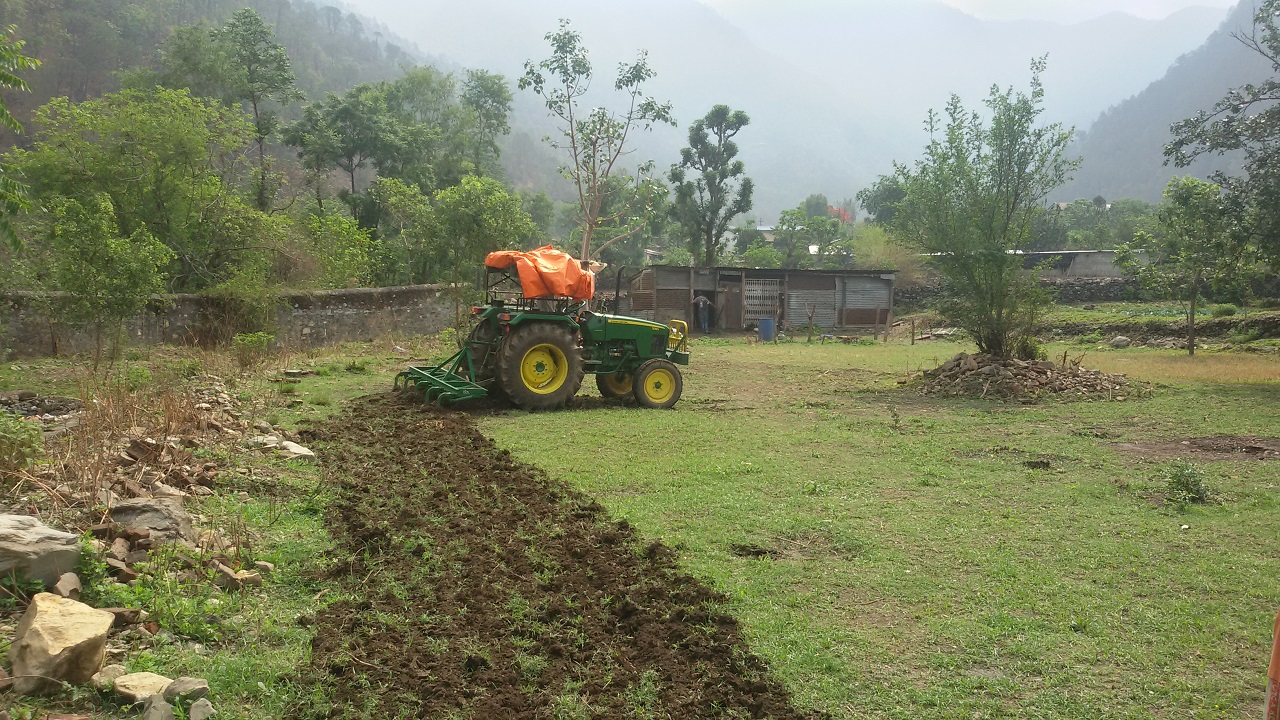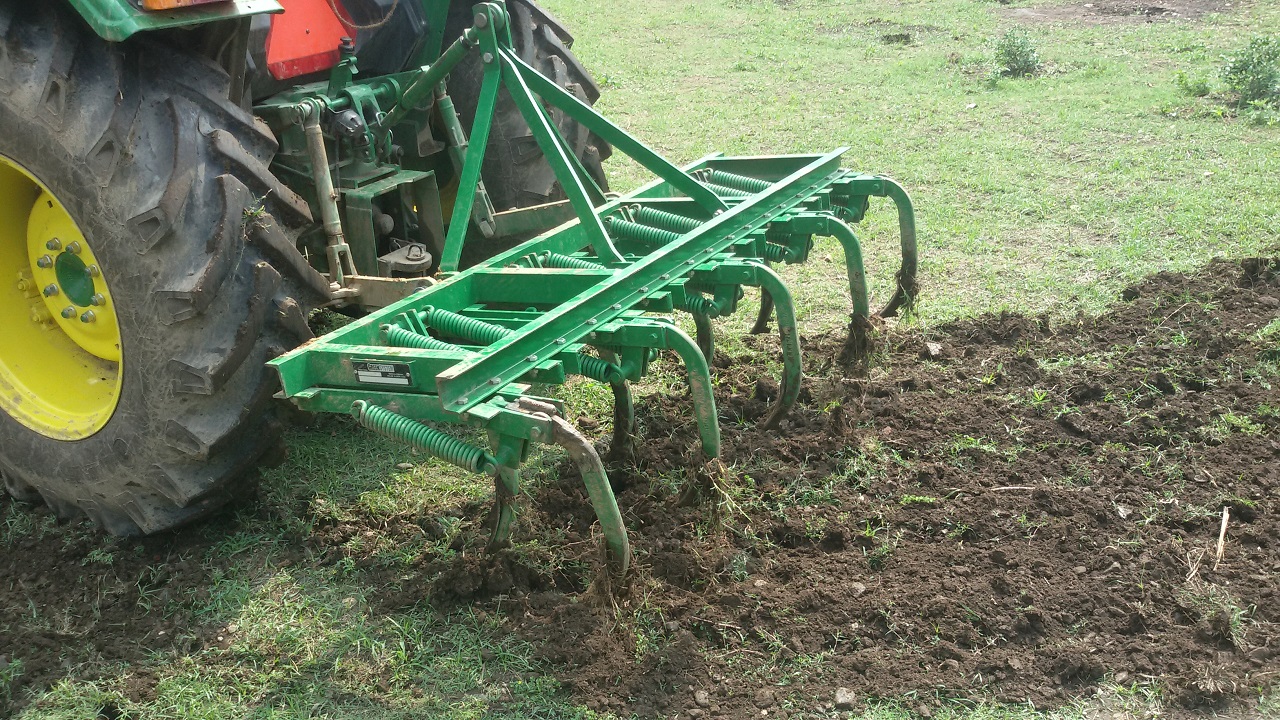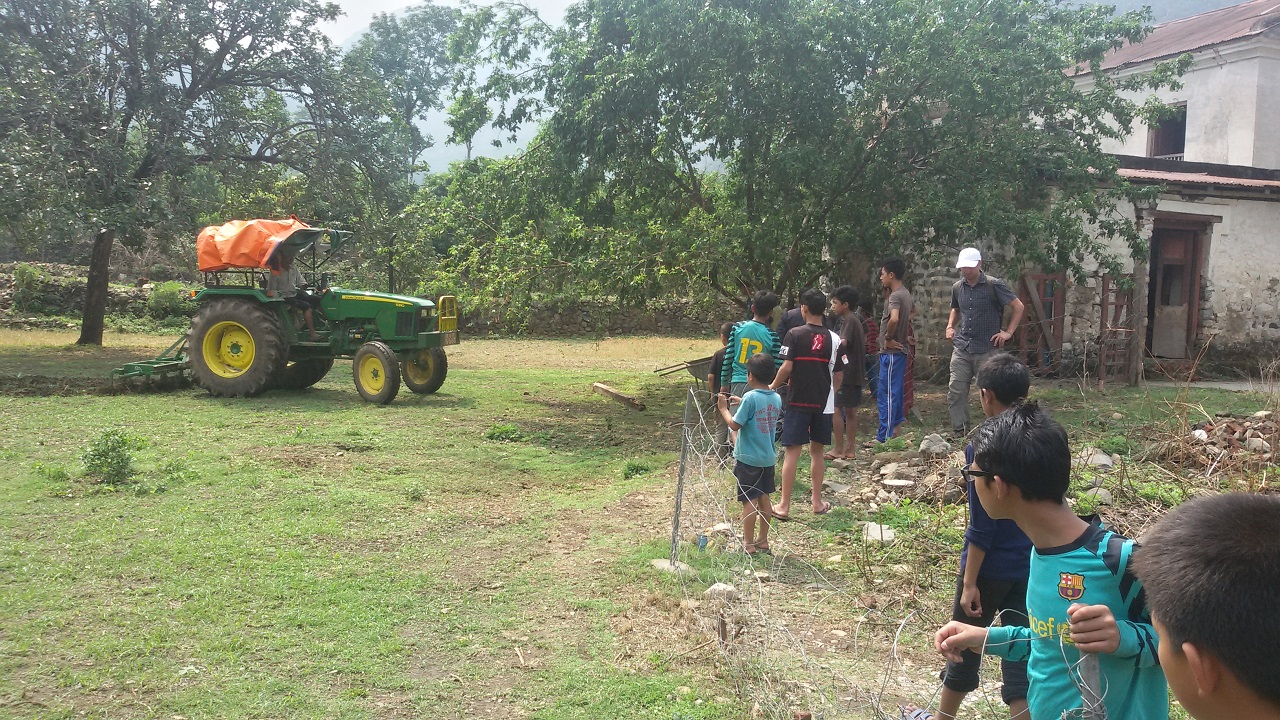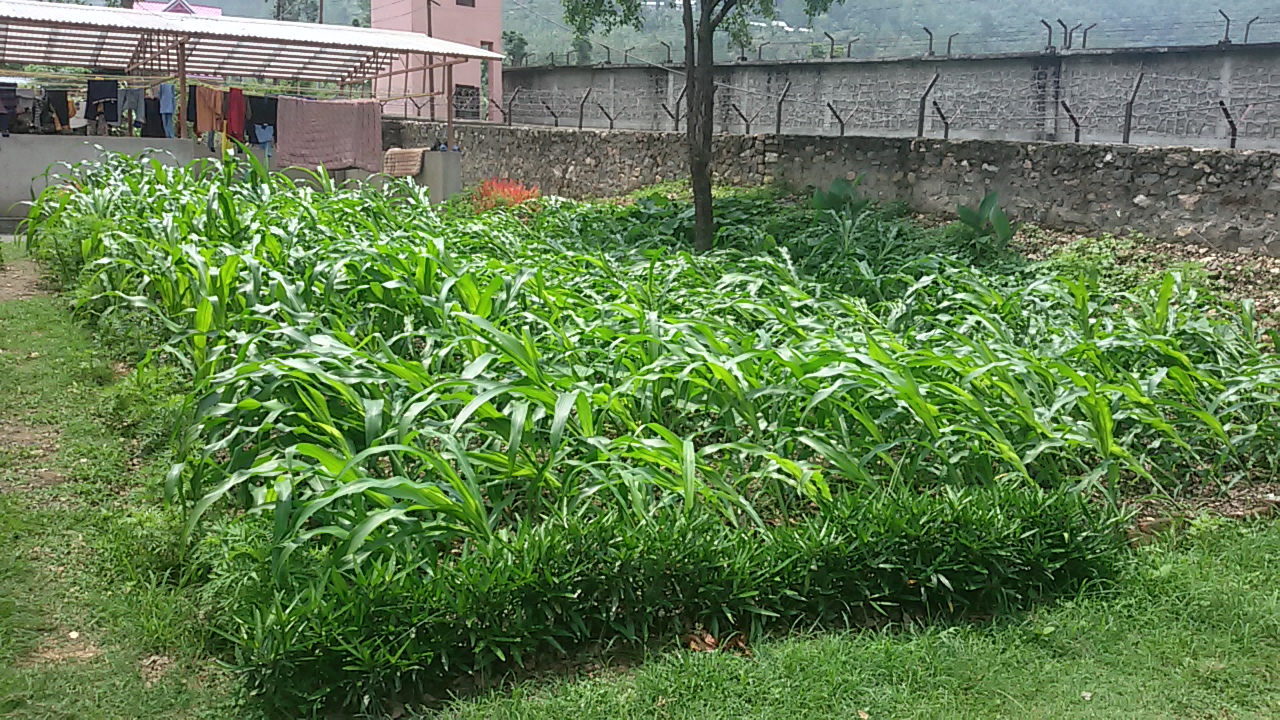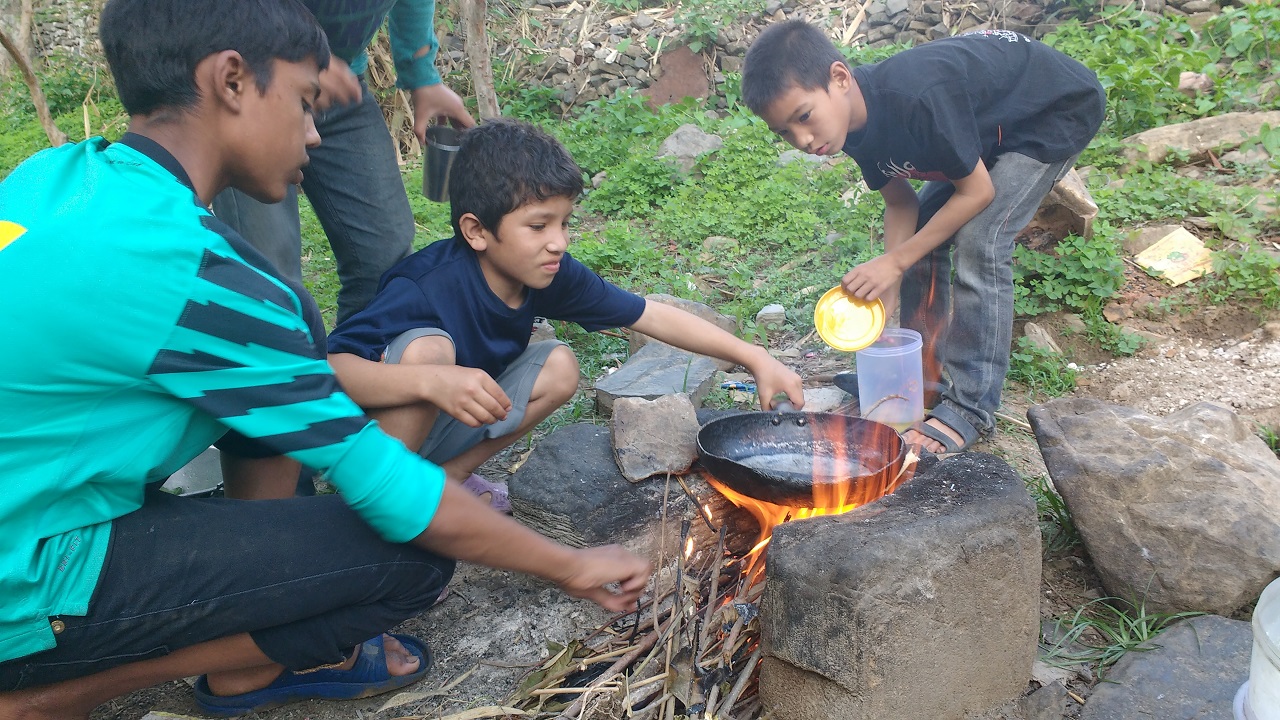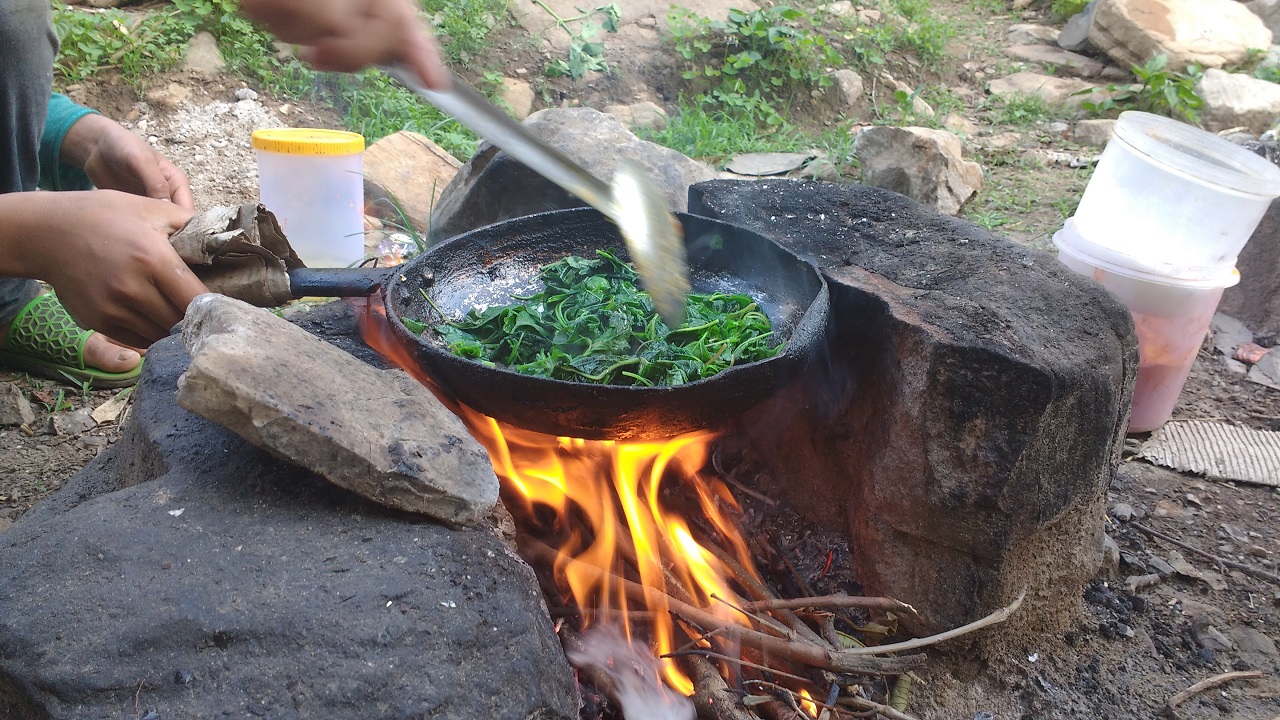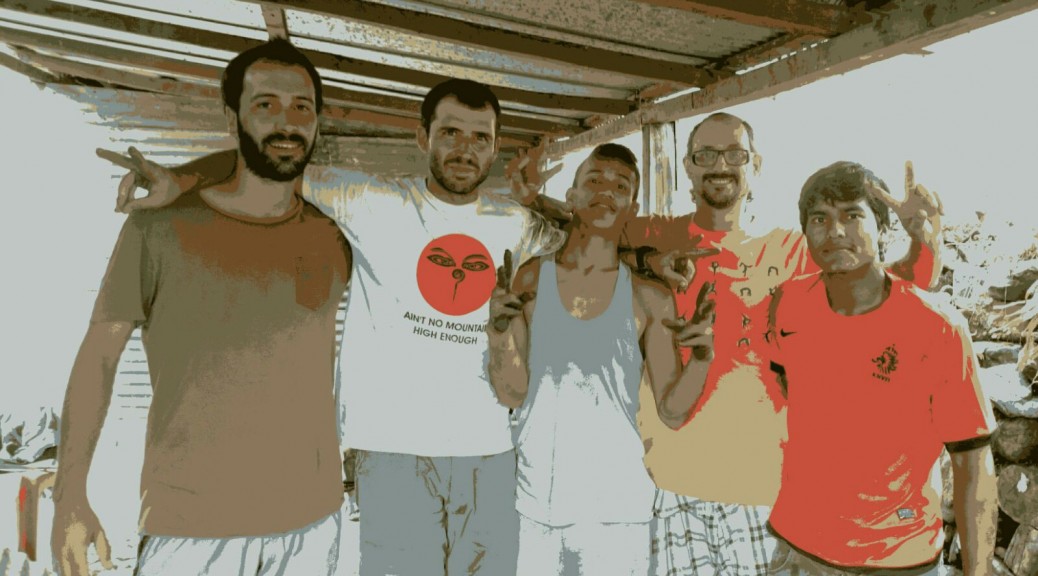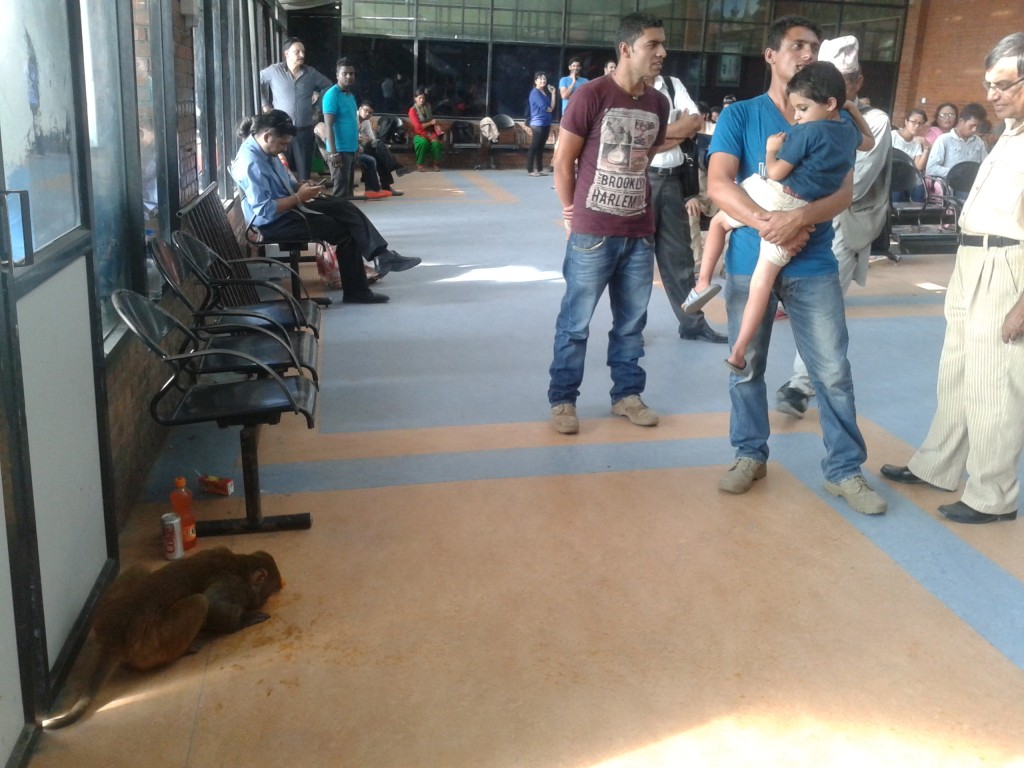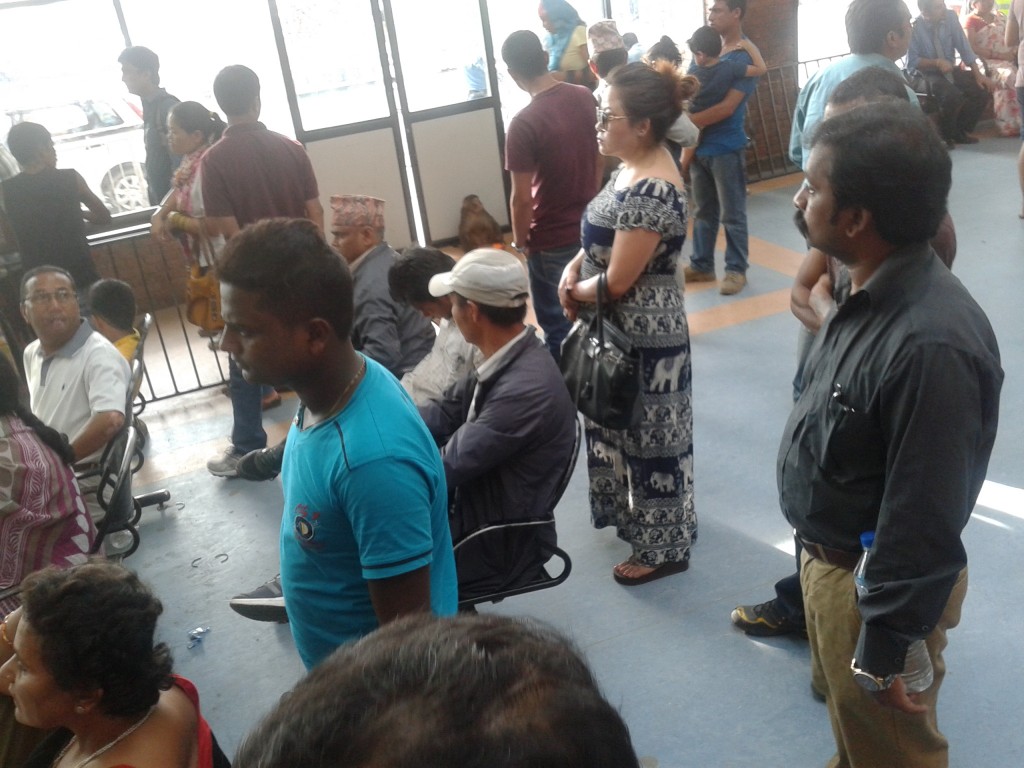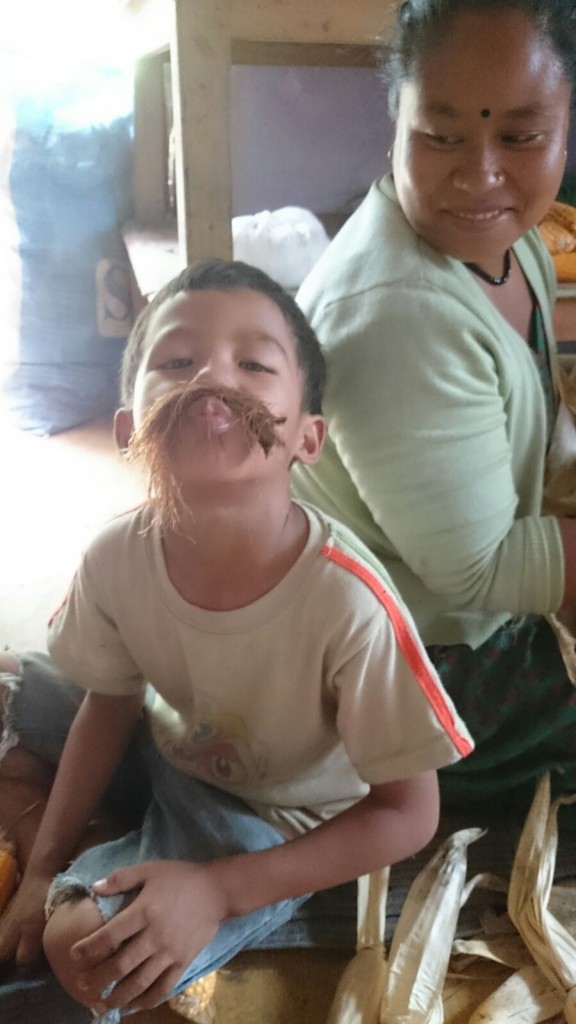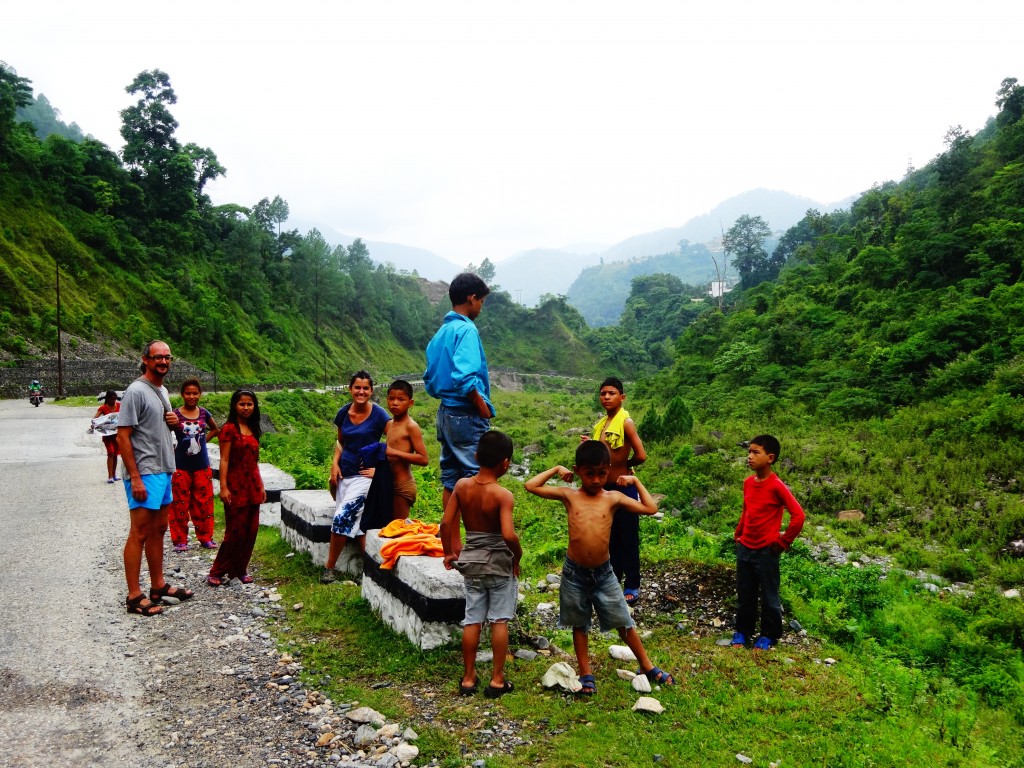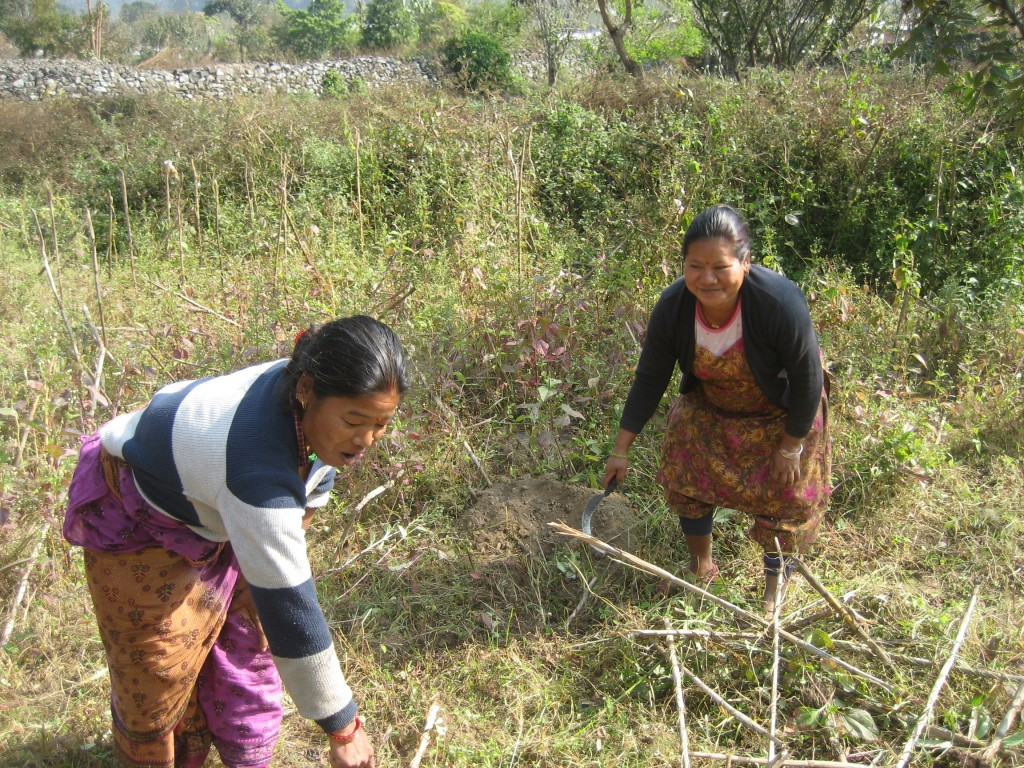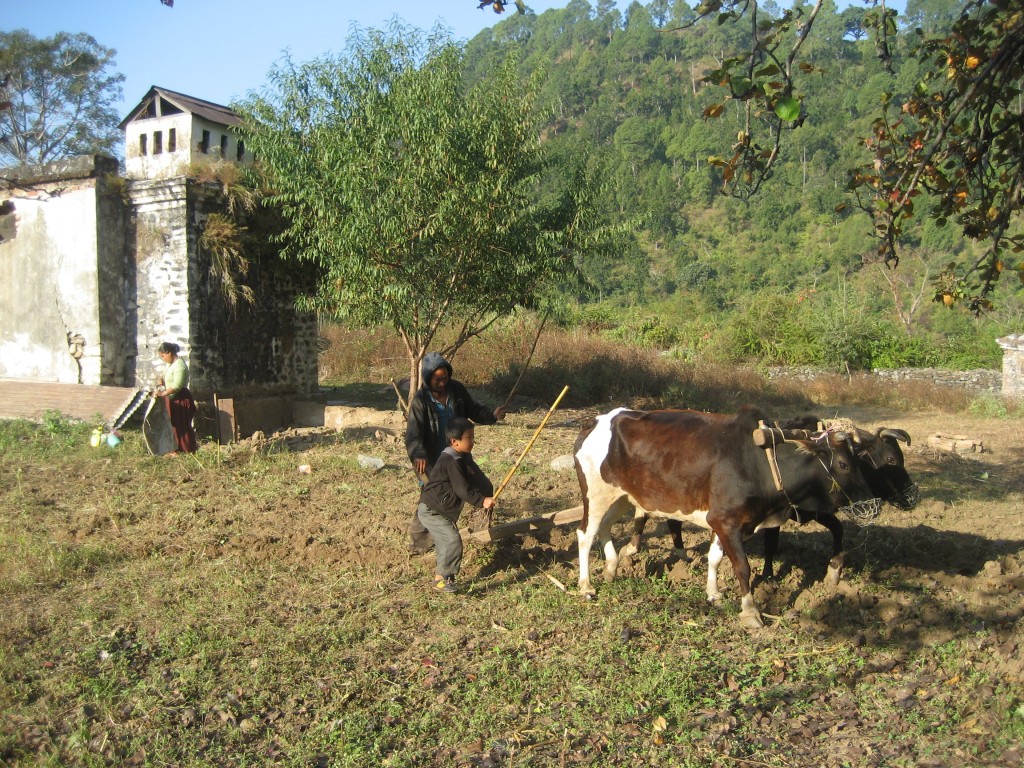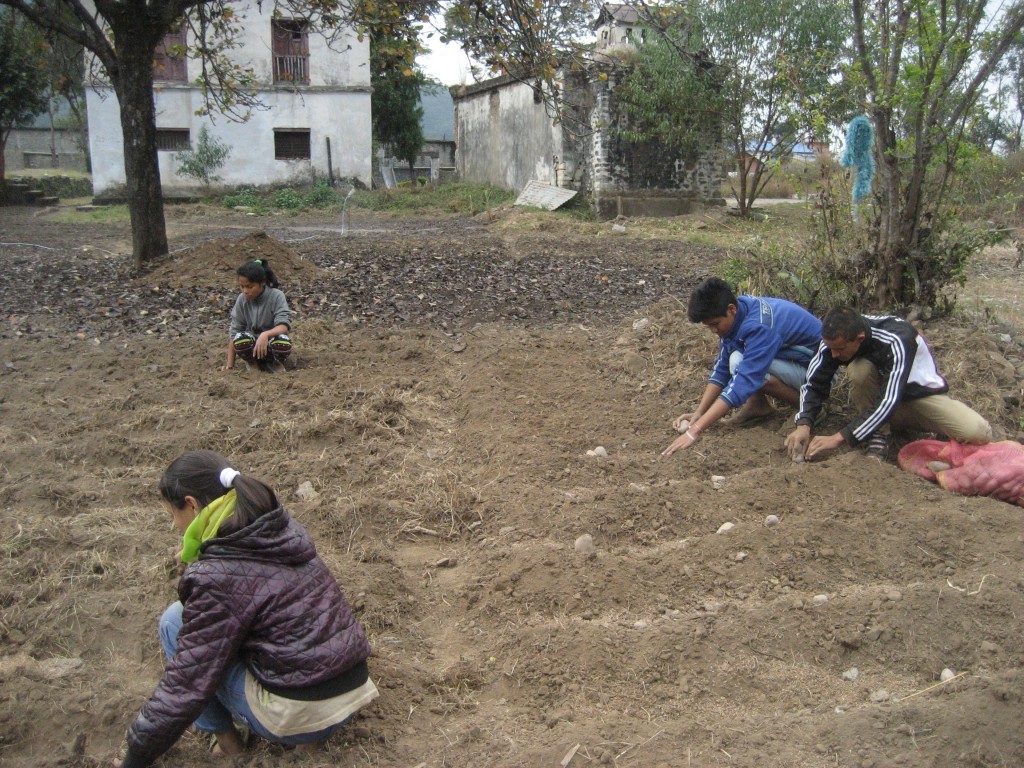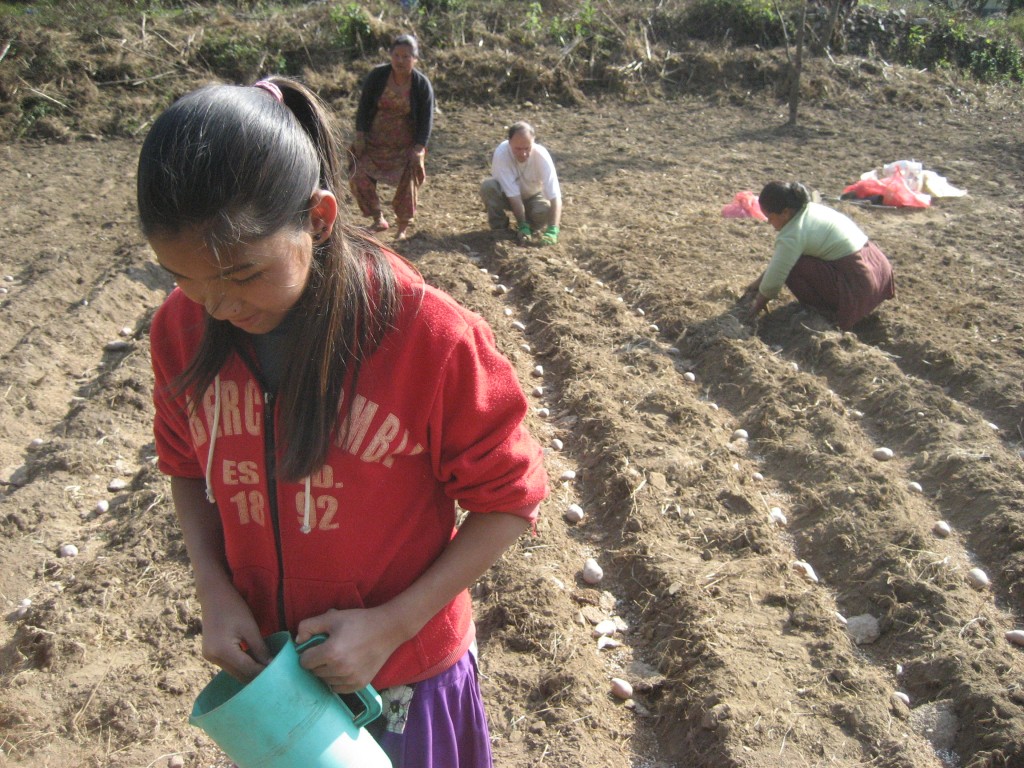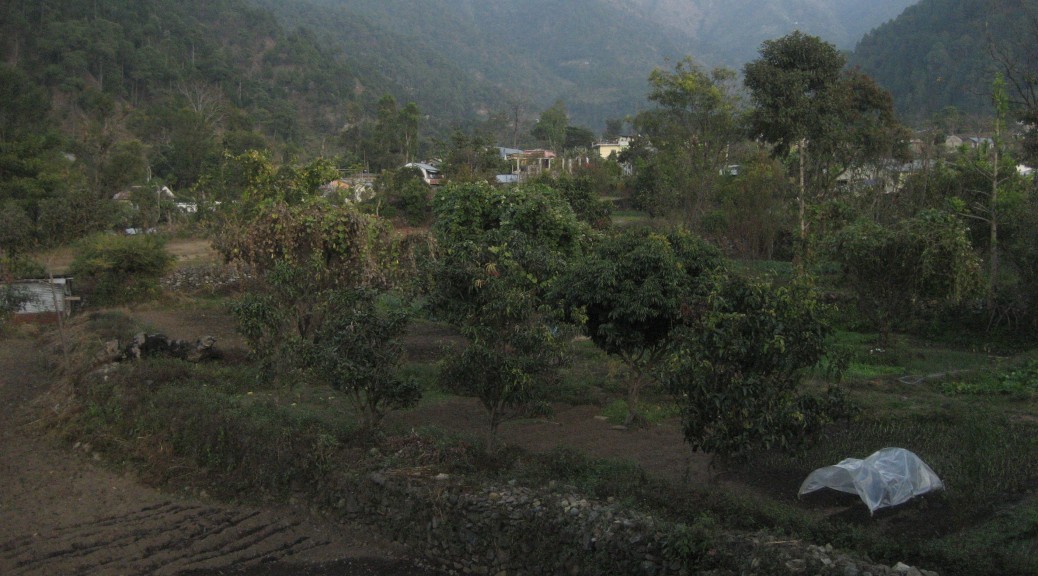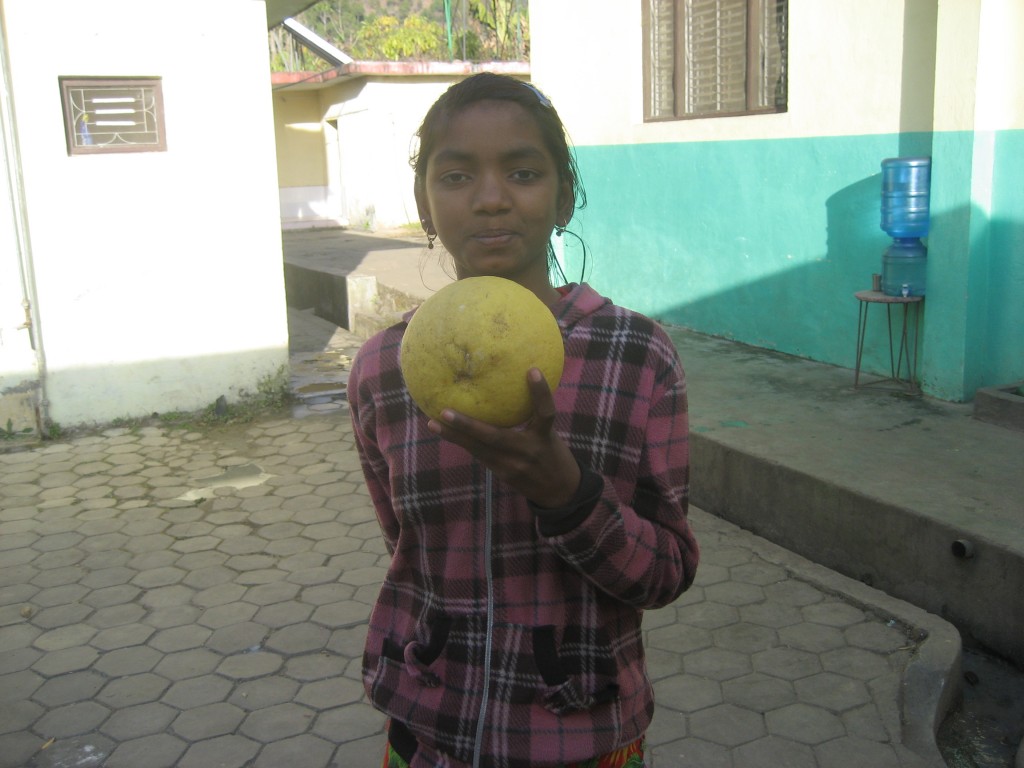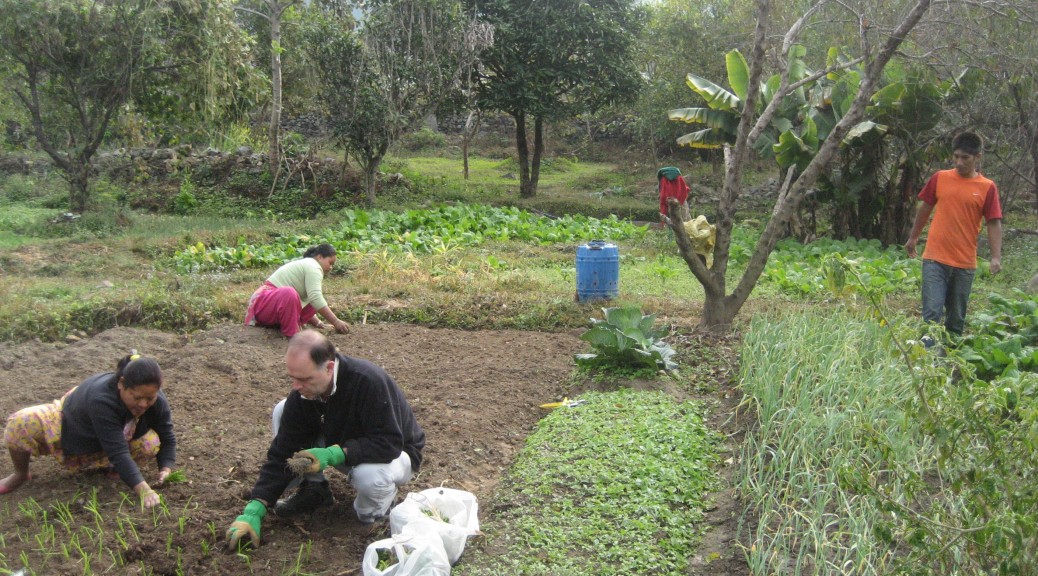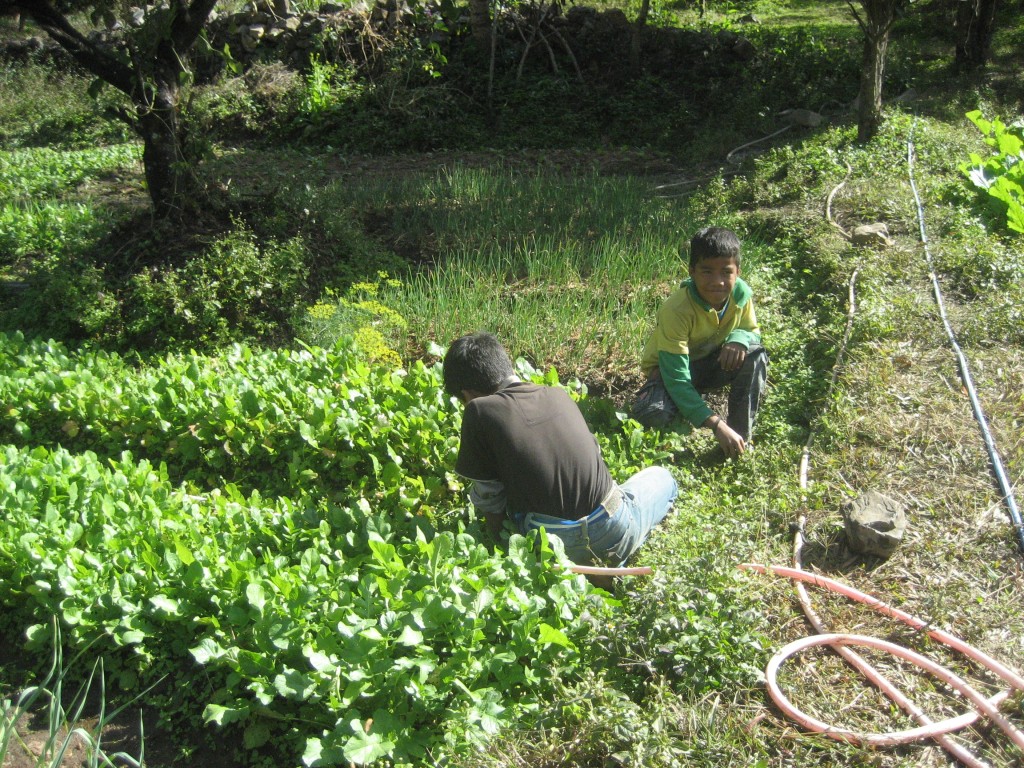Written by Joan Fisse, a volunteer at the Children’s Home
To improve the performance of the kitchen Garden of Balmandir and protect plants from torrential Monsoon rains that break the fruits before time, it seemed interesting to build a greenhouse, or more accurately a tunnelhouse, whose function is to work as a giant umbrella. We searched information on similar constructions in Nepal and found out that the most used material is the wired bamboo covered by a plastic. So we started the project!
First we chose the location in the garden and we decided on a barren plot that allowed us to make a 20m x 5m greenhouse. We were conditioned in terms of width by the size of available plastics. There was only one problem: in the middle there was a tree that was used as a support to a cucumber that was in full production. The garden is full of giant cucumbers. Every day a child or two walks around with a plate with a chopped cucumbers offering to the other children, staff and volunteers.
After several conversations, on the same day in the afternoon, the cucumber and the tree that were in the desired plot had disappeared: Santamaya didi had taken the decision.
We started the adventure of buy the required materials. For that we had go to Hetauda (around 26 km from Bhimphedi on a bus). Finding the right materials and transportation is not so easy. The most complicated was to carry the sixty 6-8 m long bamboos. But luckily the roof of the bus works for anything so we put them there. Unloading was easier when we reached to the Children’s Home because everyone took part in the event.
We also cleared the ground of grass with the collaboration of everyone. Pere, a volunteer who came for few days, helped us in that as well. We built the six goals that should support the entire structure, cutting and painting the bases to protect them from the moisture, and began to put the first bamboo. On the goals and the central pillars we fixed the rest of the structure, working as often as the Monsoon rains allowed us.
But what the monsoons didn’t take into account was the arrival of Esther, an expert in agriculture and management of greenhouses, who gave us the push we needed to complete construction of the structure and the following steps till finishing the works.
After placing some wire to prevent rainwater to make small pools on the roof, it was time to put the plastic. It was an exciting time since it was a real team work. Three people pulling the plastic and other three people, with the help of three sticks with sacks on top, were accompanying the plastic to prevent it from tearing with any of the obstacles.
After testing the roof with the torrential rains of recent days, we fixed the plastic roof areas where water stayed.
Meanwhile two teams dealt with the two rooted trunks we had to take out of the middle of the greenhouse. We still had some works in mind: to refill the holes left by the rooted trunks, to kill grass and works of the soil using a plastic and the powerful sun of this latitude, add a fertilizer and finally to grow tomatoes, strawberries and other tasty vegetables.
All this would have not been possible without the participation of all including the new volunteers Mireia and Jordi and also the help of the two days visitors, Laura and Pol (volunteers two and a half years ago).
Bernat, a volunteer who has passed like a lightning, has really helped us with the construction of a germination table and with the works of high-altitude while assembling the structure of the greenhouse. On the table we have already some seedling growing of Moringa. In addition, Bernat has left, as well, the workshop as if it was professional workplace.
Once children filled the holes of land, the smaller kids take the lead on the sealing of the solarization plastic. A great team effort! With good outcome! Only wait 3 or 4 weeks and already we plant!
Thanks to the information provided by Maya didi we can now prepare a good program for planting in the greenhouse.
We look forward to the first harvest!
